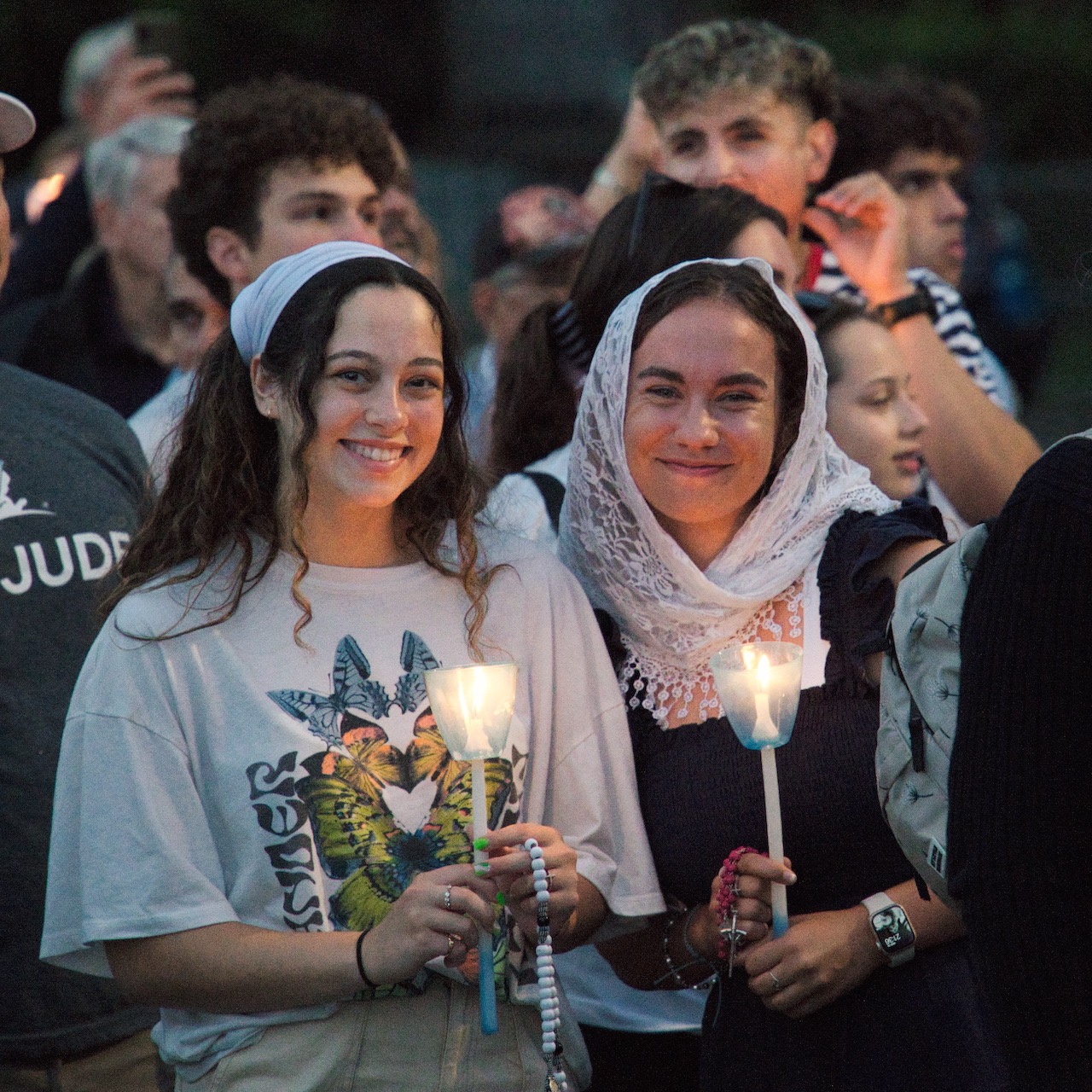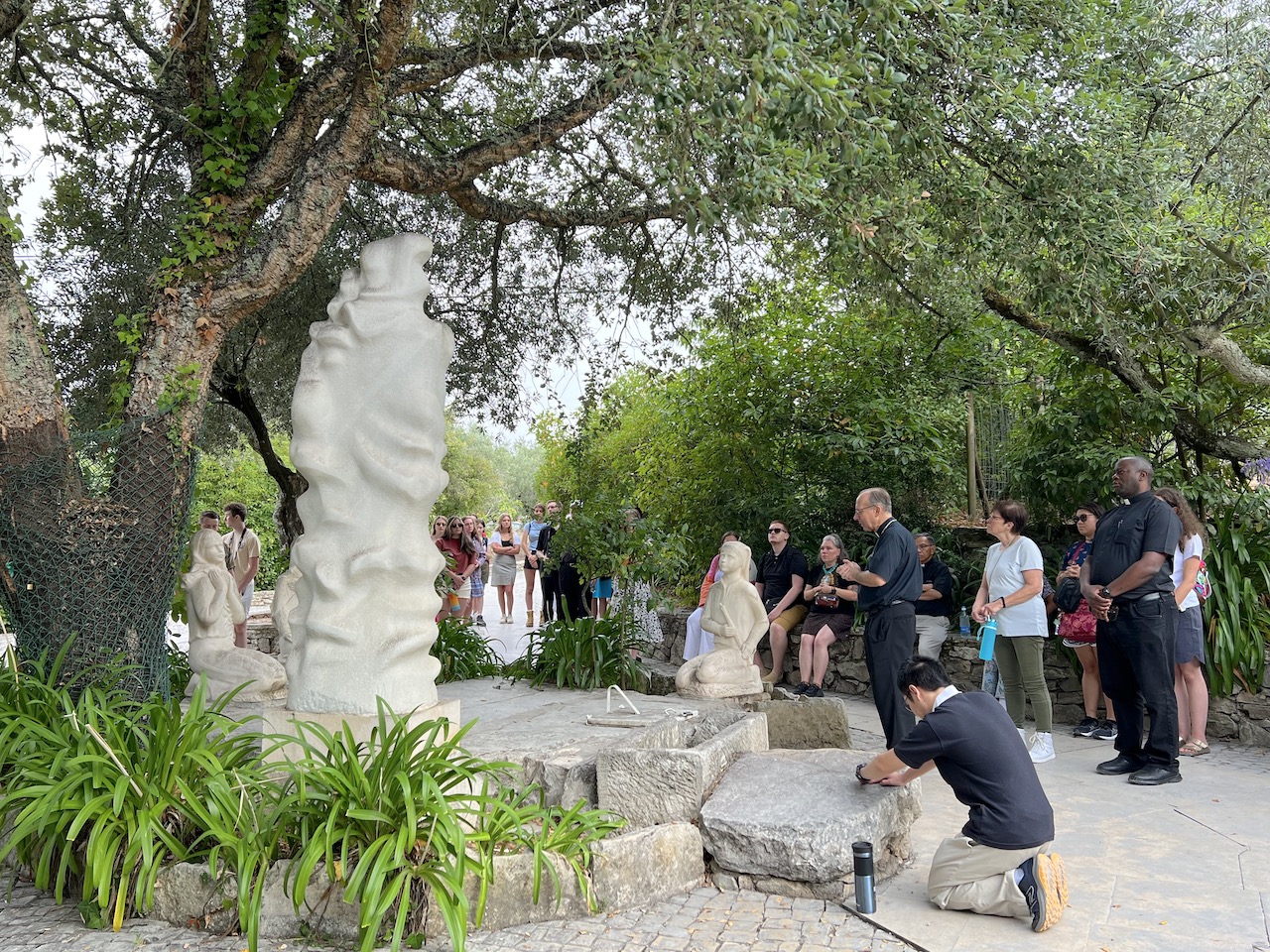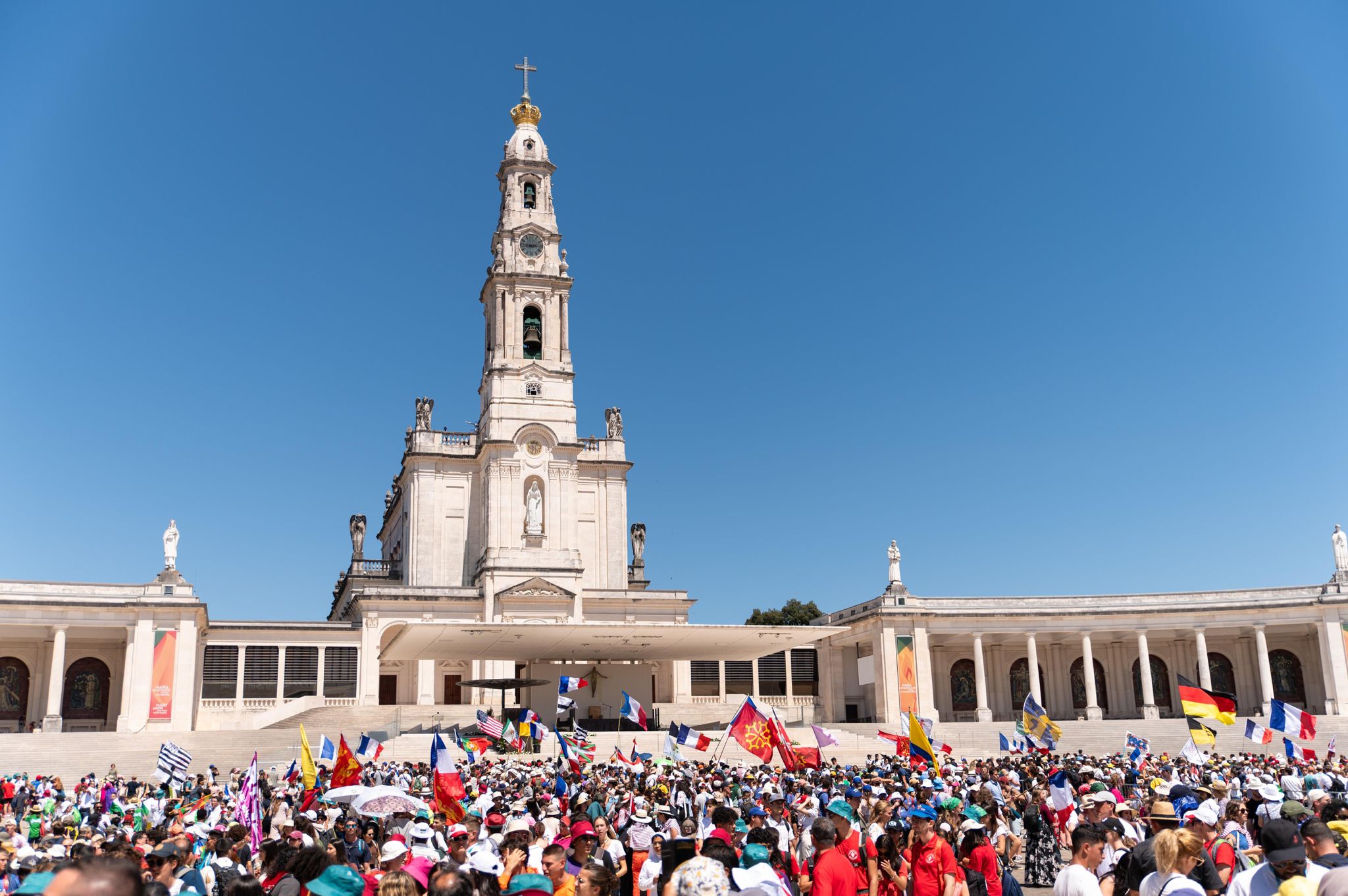The group representing the Diocese of Richmond at World Youth Day (WYD) spent a full week in spiritual preparation for the global encounter with Pope Francis – with Bishop Barry C. Knestout joining members of his flock for part of it.
“He reminded me of Jesus the Good Shepherd, as he is called to shepherd his flock,” said Eric Hasenbein, a senior at Virginia Tech.
The diocesan delegation made a pilgrimage across Europe with visits in France, Spain, and Portugal – before making their way to Lisbon, Portugal, the site of this year’s World Youth Day.
“Coming into each day with just open hearts – we know our itinerary, we know where we’re going, but we don’t know what message we’re going to receive,” said Hasenbein.
The diocesan Office for Evangelization led the group of approximately 60 pilgrims, including high school students, youth/campus ministers, seminarians, and priests, on the spiritual journey.
“Hearing what the Lord has to say to us that day and at that moment is an unexpected thing but it’s the most beautiful thing because we have to listen to the Holy Spirit,” said Hasenbein.

The diocesan delegation arrived in Lourdes, France, on Tuesday, July 25, and went to Mass in the Crypt, the sanctuary which is below the Basilica of the Immaculate Conception. Afterward, the group attended a candlelight rosary procession.
The following day, the local pilgrims remained in Lourdes and attended Mass in the Grotto, where the Virgin Mary appeared 18 times to St. Bernadette Soubirous in 1858. They toured the baths with the healing waters, learned about the life of St. Bernadette, and once again took part in a candlelight rosary procession.
“The most powerful moment of the pilgrimage” up until World Youth Day was “definitely the processions,” said high school student Townes Mullinex, a parishioner at Sts. Peter and Paul, Palmyra.
“It’s amazing seeing so many people who speak different languages sing the exact same song, all do the exact same things, and know that we’re all believing in the same thing,” she explained.
Thursday, July 27, the diocesan delegation drove to Burgos, Spain, and toured the historic Burgos Cathedral. It is designated as a World Heritage Site because of its magnificent Gothic-style architecture.
The following day, the group remained in Spain and traveled to Santiago, visiting the iconic symbol of the city, the Cathedral of Santiago de Compostela. The cathedral is widely known as the end of the Camino de Santiago (the Way of St. James), a renowned pilgrimage route. The apostle St. James the Great is buried at the cathedral and the diocesan pilgrims venerated his tomb.
It rained that day, but many of the pilgrims still took time to visit the Hill of Joy on the Camino, a landmark on the pilgrimage route.
“Each stop along the way has drawn us deeper into the spirit of pilgrimage and deeper into prayer,” said Andrew Waring, director of the Office for Evangelization. “It has been a great week … and this has set us up well for World Youth Day.”
On Saturday, July 29, the group traveled to Portugal, stopping in Coimbra to visit the tomb of St. Elizabeth of Portugal. The diocesan pilgrims arrived in Fátima, where they were joined by Bishop Knestout, and took part in a candlelight rosary procession.
“The most powerful part for me has to be arriving in Fátima – we entered at night right before the rosary procession and entering, crawling on my knees … entering that theme of prayer and penance as we approach Our Lady … it just draws you in closer to Christ and to the message of the Gospel,” said Hasenbein.
“And to pray the rosary with all these pilgrims who are sharing Our Lady’s message is so powerful and so beautiful,” added the college student.
The next day, the delegation visited the village where the three children of Fátima lived when the Blessed Mother appeared to them in 1917. Waring said Bishop Knestout led the group in prayer and reflection. The pilgrims said it was even more meaningful to have the bishop praying with them in a place where the Blessed Mother appeared.

“Bishop Knestout has been phenomenal. He’s been shepherding us … he was just guiding us through the meditations and what we needed to pray for … and that was very helpful coming from the knowledge and the wisdom of the bishop,” Hasenbein said.
“Visiting the village of the children with Bishop Knestout was great because he explained everything very clearly to us,” said Mullinex, “and it was really cool praying with him because I only got to see him at my confirmation.”
This was Bishop Knestout’s first pilgrimage to Fátima. He said the most memorable experience there was visiting the shepherd children’s village. The bishop said the children’s families owned some land for their sheep, but their homes were “small, humble, and ordinary.”
The ground throughout the town is very rocky, and the region is mountainous, so it is not possible to dig wells, said the bishop. He said he was fascinated by the sustainable design of a cistern located inside the house where all the rainwater from the roof was directed.
A stone cross was also visible on top of the home – “a reminder of the Catholic piety of the community – that it is from the cross and the side of Christ that the sacraments of baptism and Eucharist come,” said Bishop Knestout.
“The water they captured from the roof tiles and stored in the cistern was a treasured source of life for them, as well as a constant reminder of eternal life given in baptism,” the bishop explained.
The pilgrims attended Mass outdoors with thousands of other pilgrims from around the world at the Sanctuary of Fátima. They capped off the evening with the nightly rosary procession.
“The most unexpected part of the pilgrimage was seeing how many Catholics there really are … in my parish there aren’t many young kids, so it’s surprising to see all of them come together – and there being so many of them who believe so strongly,” Mullinex said.
Lourdes and Fátima “offer unique graces for the pilgrim who visits with a heart seeking Our Lady’s intercession and open to the assistance of the Holy Spirit,” said Bishop Knestout.
“The unique grace of Fátima, I believe, is a deepening of prayer and a desire for sacrifice for a conversion of heart. Both these graces complement one another,” said the bishop. “Prayer and sacrifice are powerful spiritual instruments to bring about peace in our hearts and in the world around us.”
The next day, July 31, the diocesan group traveled to Lisbon in preparation for the weeklong events of World Youth Day.
Read about the other diocesan group attending WYD with Blue Eagle Ministries.
Read more about Our Lady of Fátima and the Miracle of the Sun.

